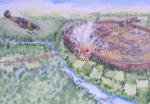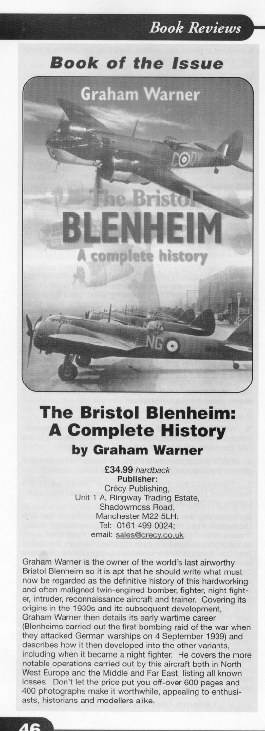~PAINTINGS~
This is a nicely done web site by Gerard Brigden, a 113 Squadron veteran, and one of the co-founders of (this) 113 Squadron website. Gerard, a Hurricane fighter pilot saw active service in the Far East Burma campaign and following the war became a noted international Architect. Also a skilled artist in watercolours, he recently began capturing some of his adventures on the Squadron in paintings. Prints of these are available at a very attractive price through his web site above.
A delightfull collection of thought provoking paintings by artist George North. These cover all aspects of the RAF from Costal Command to Blenheims over Burma. Drop in and browse his Gallery, you won't be disappointed.
~BOOKS~
NOT ALL OF US WERE BRAVE, published by Dundurn Press in 1997. Author: Stanley Scislowski Perth Regt, 5th CDN ARMD DIV, 1943-1945
EXCERPT: In World War II, a certain number of events happened which fell into the category of “now it can be told” stories. The bombing of Bari harbour on the evening of December 2nd, 1943 was one of such stories. In a raid by a relatively small number of planes, the Luftwaffe succeeded in destroying 17 Allied merchant ships and killing well over 1000 military personnel, merchant seamen and civilians. For all the havoc inflicted, there was something else about the raid which compelled British Prime Minister Churchill to throw a heavy security blanket on news about the raid and its aftermath.
Bari is located on the Adriatic side of the Italian peninsula at the point where the heel of the boot curves in to join the Achilles tendon. At the time of the raid the city had a population of some 250,000 souls and was almost unmarked by the heavy hand of war compared to the destruction Naples had suffered. It was a city of two faces, one old and shabby, and one new and reasonably pretty. The old face of Bari was one of a twisting maze of narrow streets heavy with the foul and musty smells of alleyways, animal droppings, gutters, and of antiquity. The winding ribbons of wagon-worn pavements invariably ended in open areas or piazzas where ancient churches and archways gave to this old section its link with the mediaeval past. The new face of Bari, by comparison, was an attractive one of wide streets and modern buildings, tree-lined avenues and beautiful fountains, contrasting sharply with the old city, mellowed by the sun, the wind and the rain of a hundred thousand days.
THE BRISTOL BLENHEIM Published by Crecy Publishing in 2003, Author Graham Warner.


